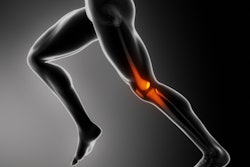
Physicians with a history of imaging use are more inclined to order low-value imaging -- especially if they own the scanners, according to a September 25 study in JAMA Internal Medicine. The findings could affect the debate over whether prohibitions against physician self-referral should be extended to in-office imaging.
Researchers found that primary care physicians are nearly twice as likely to order low-value imaging for headache if they also previously ordered low-value imaging for back pain, while chiropractors and medical specialists are nearly three times as likely. And chiropractors were almost eight times more likely to order low-value imaging if they owned the radiology equipment, wrote the group led by Dr. Arthur Hong from the University of Texas (UT) Southwestern Medical Center (JAMA IM, September 25, 2017).
Long a concern of Medicare and private payors, the growth of low-value imaging could begin to hit patients in the pocketbook as they assume more responsibility for the costs of their healthcare, through high-deductible plans and other methods.
"Because of increasing patient cost-sharing, low-value imaging will increasingly cause 'financial toxicity' to patients," the researchers wrote.
Driving down costs
Efforts to rein in healthcare costs in the U.S. have focused on inappropriate utilization, with low-value medical services believed to account for up to one-third of all medical expenditures, Hong and colleagues wrote. A major driver of unnecessary care is variation in clinical practice between individual physicians.
Previous studies have found that variation between clinicians contributes to low-value care in the Medicare system, while other research has tied physician ownership of imaging equipment to overall use of imaging, according to the group. (While Medicare rules generally prohibit physicians from referring to facilities where they have a financial interest, there are exemptions for services performed in a physician's office.)
The UT Southwestern researchers wanted to examine the types of characteristics among clinicians that would predict whether they ordered low-value services for two clinical indications: acute uncomplicated back pain and headache. They analyzed commercial insurance claims from a single U.S. payor from 2010 to 2014 in adults ages 18 to 64. The team identified 873,000 adults seen for uncomplicated back pain, 483,000 adults seen for acute uncomplicated headache, and 345,000 adults seen for both headache and back pain. Imaging rates were calculated using a statistical model.
Clinician ownership of imaging equipment was flagged by identifying nonradiologist clinicians who filed technical or global claims for any imaging exam, not only low-value studies. Clinicians who billed for at least three episodes of imaging were classified as owning the equipment.
The researchers then calculated the odds ratio for a patient to receive low-value imaging, with numbers higher than 1.0 indicating a greater likelihood; a finding of 2.0 would indicate twice the likelihood. The group then calculated odds ratio by variables such as past history of low-value imaging, equipment ownership status, and physician type (the most common specialists were in orthopedic surgery, neurosurgery, back and spine surgery, physical medicine, and rheumatology).
| Predictors of low-value back pain imaging, by physician type | |||
| Clinical circumstance | Primary care | Specialist | Chiropractor |
| Prior history of low-value imaging for headache | 1.81 | 2.98 | 2.80 |
| Ownership of imaging equipment | 2.06 | 4.96 | 7.76 |
Hong said he was surprised at the high rate of low-value imaging among chiropractors, he told AuntMinnie.com.
"I was quite surprised," he said. "There may be something I'm not aware of about how chiropractors are trained to practice, but it seems worthy of further exploration."
Hong and colleagues then used the odds ratios to calculate imaging rates for low-value imaging, based on clinical circumstances and physician type. Primary care physicians whose previous patient did not have imaging had the lowest rates, while specialist physicians whose previous patient had undergone imaging had the highest rates.
| Rates of low-value imaging for back pain, by physician type | |||
| Primary care | Chiropractor | Specialist | |
| Clinician's prior patient had imaging | 20.3% | 28.5% | 49.0% |
| Clinician's prior patient did not have imaging | 12.5% | 13.6% | 27.0% |
The data indicate that the two strongest predictors of low-value imaging for headache and back pain were a physician's prior patterns of imaging use and their ownership of equipment, and these associations tended to be greater for chiropractors and specialists, according to the researchers. Also, physicians who had higher rates of imaging for low back pain had higher rates for headache -- indicating that overuse patterns persist across clinical scenarios.
What are the implications of the study? For one, the authors speculated that while efforts to address physician overuse of imaging by giving them feedback on their performance are promising, such tools may not address drivers such as fear of malpractice and discomfort with clinical uncertainty.
With respect to the link between imaging ownership and overuse, the findings indicate that antiself-referral laws with loopholes for in-office physician ownership "may be less effective than intended," Hong and colleagues believe.
As the U.S. healthcare system shifts toward more cost-sharing with consumers, patients may find themselves footing more of the bill for low-value imaging -- with little say in the matter.
"Cost-sharing is promoted as a means of motivating patients to avoid unnecessary care, yet it is not clear that financially motivated patients are able to avoid low-value imaging," they concluded.
The challenge is how to help patients be more aware that low-value imaging does occur, Hong told AuntMinnie.com.
"I'm not sure how productive it would be to educate patients about all the specific clinical guidelines, but I do think it would go a long way for people to understand that more care is not always better, and that there are pitfalls and harms to ordering imaging when there isn't a clear clinical justification," he said.



















